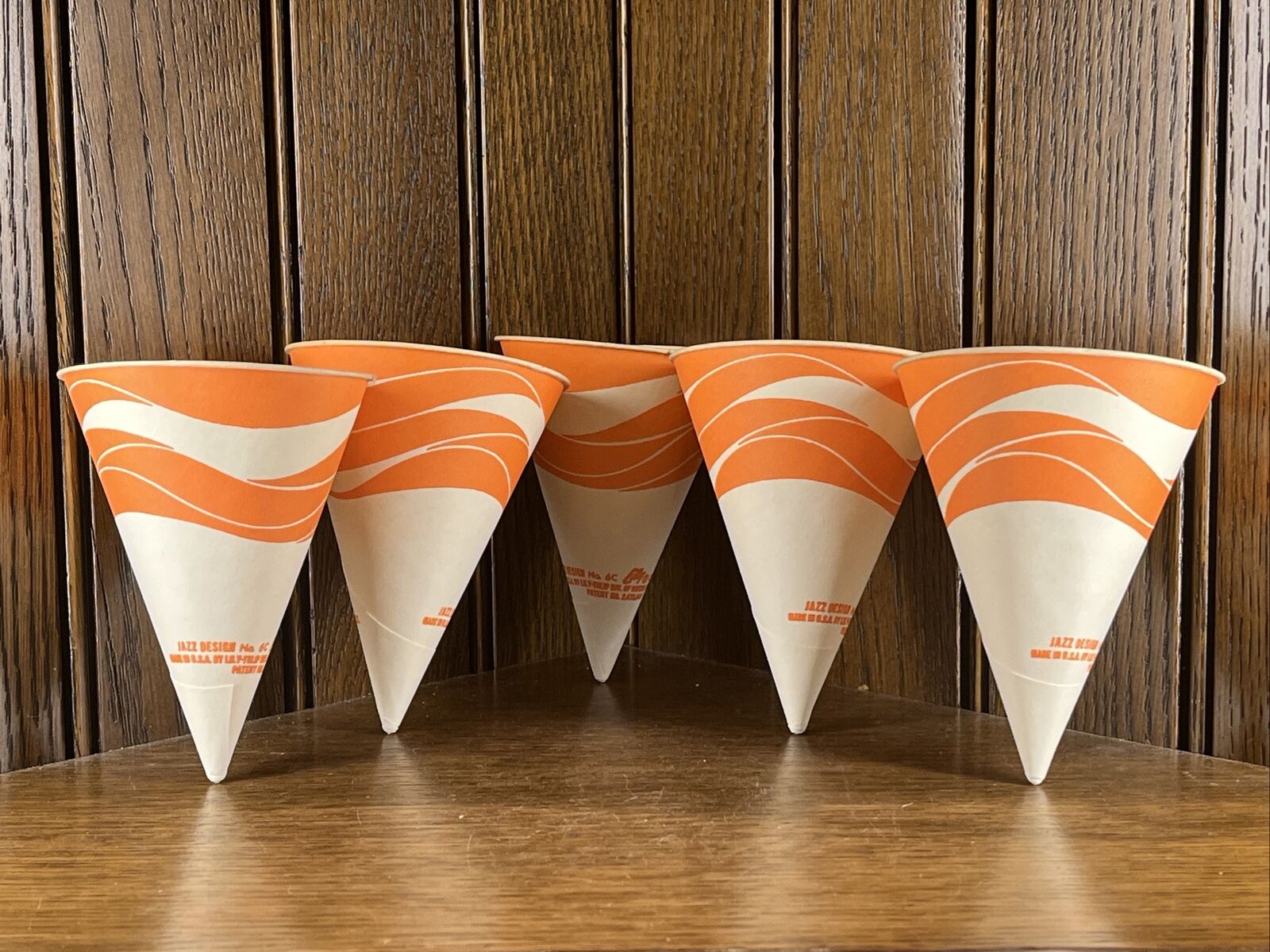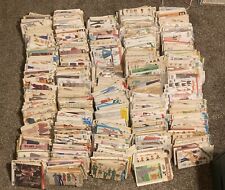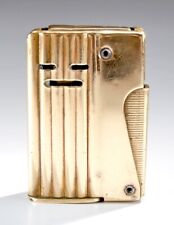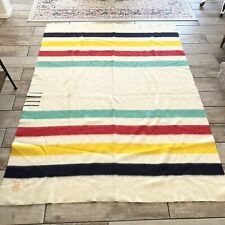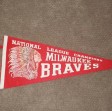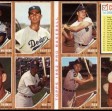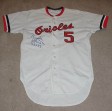When you click on links to various merchants on this site and make a purchase, this can result in this site earning a commission. Affiliate programs and affiliations include, but are not limited to, the eBay Partner Network.
Vintage 1940 Lily Soda Fountain Tulip Vee Paper Cone CupsCups - Holds 6 oz
Original Paper Cones
Jazz DesignNo 6C
Lily . Owens Illinois
A great addition to your Pharmacy, Candy Store, Soda Fountain, Drug Store, Pharmacy or Apothecary Display ConditionNOS - Never used - Nice Condition as shown in class=\"MsoNormal\" align=\"center\">The neighborhood drugstore, featuring a soda fountain andlunch counter, became a cornerstone of small-town America in the early 20thcentury. But the history of the pharmacy goes back much further, to ancienttimes when shamans and apothecaries formulated herbal remedies believed to havemagical properties. In medieval times, apothecaries were also known as\"spicers.\" By the 17th century, apothecaries had split from grocerswho sold spices with food and formed their own societies, legitimizing theirstature and expertise.
It\'s easy for us, with our knowledge of modern science, todismiss these early chemists as quacks. After all, it\'s hilarious that a remedycalled Bear\'s Grease, made from actual bear fat, was prescribed as a treatmentfor baldness. (Bears have plenty of hair, right?) But these men, who consideredthemselves serious scientists, discovered the forerunners to many of the drugswe use today.
In their day, pharmacists were revered in their towns andvillages. Bell founders cast their decorated mortars from metal, top Europeanpotteries made their drug jars in Delftware and tin-glazed earthenware, andglass makers blew their laboratory tools for distilling liquid remedies.
Mortars and pestles are perhaps the most iconic symbol ofthe pharmaceutical profession, used on prescription pads, in pharmacy signage,and to decorate apothecary tokens. This is because the mortar and pestle wereessential for early apothecaries and chemists to grind up roots, rhizomes,dried herbs, and minerals to make powders and ointments.
Counter mortars, made of bell metal, brass, copper, iron,glass, marble, or other stone, were generally 4 to 6 inches tall. They could besingle or doubled ended, and they might be waisted, shaped like a cup, orstraight-sided. The problem with a metal, stone, or marble mortar is the riskthat the mortar material could contaminate the formula being prepared by thechemist. In the 1780, Wedgwood introduced a biscuit porcelain mortar designedto reduce the contamination danger.
Another important component for an apothecary\'s lab was anaccurate measuring scale. However, leaders in various regions hardly everagreed to a universal standard of measurement. In 1497, Henry VII defined thetory weight for spicers and apothecaries in England. When the Avoirdupois poundwas adopted in 1855, most apothecaries stuck to tory weights. By the 18thcentury, iron and lead weights were replaced with brass ones, and these arefound in both tory and Avoirdupois pound measures.
The early scales, known as equal-arm scales, had two pansattached to the opposite ends of a beam. These would often be held by hand, bya tassel or tag affixed to the center of the beam, or they could be hung from asolid object above. Pillar scales are similar, but they feature a free-standingpillar or support in the middle so the scales don\'t have to be held.
Before glass containers were affordable, pottery was thematerial of choice for early pharmacies: The earliest ceramic drug jars, alsocalled gallipots, were first made of tin-glazed earthenware, and then indelicate creamware produced by top Staffordshire potteries like Wedgwood andSpode. These might be painted with flowers or cherubs or just the drug\'s namesurrounded by ornate scrolls. Others were labeled with metal plates hangingaround their necks on chains.
The rise of glassware in the 19th century made porcelainpots less popular, but in the late 19th and early 20th century, earthenwarejars with colorful glazes in greens, reds, pinks, or blues were standard. Theymight be pear-shaped, straight-sided with domed lids, or rounded or steeped,with lids in pagoda shapes. Early 20th-century jars had a recessed space forthe labels, which tended to be yellow with black print.
Naturally, collectors love to find the oldest jars possiblecontaining the wildest, witchiest ingredients, which are identified either byabbreviations or in the full Latin. Those jars with Medieval extracts andrecipes like O. Scorpion (for \"Oil of Scorpion\"), Ther.London (for\"London Treacle,\" a syrupy formula made with 32 ingredients in 1618),Oil of Puppy Dogs, Oil of Earthworms, or King Agrippa\'s Ointment areparticularly sought after, even more so if the label is inscribed with theinitials of the apothecary owner or a date.
By the 19th century, the business of patent or proprietarymedicine had exploded in England, with hundreds of entrepreneurs creatingcure-alls made from secret formulas. Thus, ceramic drug jars and glass medicinebottles featured the name of the drug proprietor, like Dr. Singleton\'s EyeOintment or Turlington\'s Balsam of Life.
Because apothecaries and pharmacists sometimes gave theirclients pills, ointments, and preparations to take or apply at home, smallerceramic drug jars were also produced. During the 17th and early 18th centuries,these little pots (1 to 4 inches in height) were usually made in undecoratedtin-glazed earthenware.
Sometimes it\'s much easier to find the pot lids than thejars, making lids a popular field of pharmacy collectibles. Often the potsthemselves would be discarded, and the brightly colored, lids with elaborateunderglaze or overglaze decoration would be kept. Starting in the late 18thcentury, these lids boasted cosmetics, pomades, toothpaste, cherry salve,shaving creams, and, of course, Bear\'s Grease.
A very specific type of large apothecary pottery is theposset pot, which resembles an extravagant bulbous tea pot, with a spout andtwo handles. This pot helped separate curds from whey in the preparation ofposset, a British hot-drink elixir made by curdling milk with alcohol and thenadding spices.
In the 18th century, leeches took the place of bloodletting,or the universal practice of opening a vein to let an illness bleed out. Poor,country, Englishwomen would collect the leeches from ponds and sell them tomiddlemen, who provided them to apothecaries, hospitals, and physicians.Hospitals kept hundreds on hand, as leeches were the aspirin of the day.Leeches were actually popular up until the 1940s, and many hospitals still keepthem in stock today.
For a ceramic drug jar to be suited to leeches, it had toadmit airflow, usually through fine holes in the lid or a metal mesh covering,and the water in the jar had to be changed once a week. Leech jars, much likeapothecary jars used to hold mixtures of honey and tamarind (an astringentfruit from the West Indies used as a laxative), tended to have two handles andwere cylinder- or urn-shaped, sometimes with feet. Often these jars hadbeautiful scrolling labels in lush colors like lilac and gold. In the 19thcentury, glass leech jars with perforated shelves were considered animprovement: It was thought the leeches would clean themselves as they movedfrom shelf to shelf.
Other early pharmacy ceramics include boat-shaped feedingbottles for babies and invalids (replaced by glass baby bottles in the mid-19thcentury), pap boats and feeding cups, and eye baths, which were porcelainvessels shaped like wine glasses with short stems.
Top potteries also produced apothecary tiles, starting inthe 17th century. At first, these tiles, at times as big as a square foot, weremeant for show, decorated with the shields and insignias of official apothecarysocieties and featuring symbols such as healing god Apollo slaying a serpent,as well as unicorns or rhinos. In the 18th century, ceramic pill tiles werecreated specifically for the purpose of rounding and cutting pills by hand.Made of tin- or white-glazed earthenware, these tiles are often marked withgradations showing where to cut the pills. Around 1875, pill tiles were alsomade of plate glass in the United States.
Metal apothecary trade tokens, minted when there was ashortage of small change in England, used similar imagery to the apothecarytiles—a picture of a the trusted mortar and pestle. The values came inhalf-penny, farthing, penny, and shilling, and some were even made in square,octagonal, or heart shapes.
During the 18th century, pharmacists found a more effectiveway to advertise their shops than ceramic tiles. Large glass show globes—calledcarboys when shaped like large wine flasks—would be filled with colored liquid.A show globe conveyed that the apothecary or pharmacist was a talented chemistwho had the scientific prowess to create such bright hues. Often round,transparent, and gallon sized, show globes were also made out of red, blue, orgreen glass, and had a knobbed stopper.
Particularly gifted pharmacists could create several layersof color in one show globe, which might be lighted from behind. Somepharmacists used double show globes to heighten the effect, and in the UnitedStates, the pharmacists could be so ostentatious as to use triple show globes.Show globes could be hung from a ceiling beam, placed on decorative brackets orstands, or on street lamps outside.
As glass became cheaper during the 19th century, it waswidely used for medicine bottles, as well as for glass measures andcupping-treatment glasses. Exotic woods were used to build everything fromproprietary-medicine showcases to decorative herb boxes. Cups made of quassiawood would be filled with water overnight so the strong wood flavor would seepinto the liquid, creating a bitter to be drunk in the morning.
As patent medicines grew in popularity in the late 18thcentury, spoons for measuring dosages became important. In 1827, Charles Gibsoninvented one of the most popular medicine spoons of the day. Because manyelixirs were horribly bitter, no one—particularly not children—relished takingthem. Gibson\'s 7-inch spoon, made from pottery or silver, Britannia metal, orpewter, had a tubular handle and a covered bowl with a hole. Medicine would bepoured into the handle, and then air pressure was employed to force it into thepatient\'s mouth. Other Georgian and Victorian inventors, including John Mudge,Dr. Nelson, S. Maw & Sons, J.S. Hooker, and Sir Hiram Maxim, came up withvarious types of inhalers.
Another means for administering medicine was the pewtersyringe, also called the clyster. Yes, those cartoons showing patients runningfrom giant syringes were not far off. Developed during the 17th century, thispiston or plunger syringe was 4 to 6 inches long, and used for anatomicalinjections or irrigation. The barrels, which were sometimes also made ofsilver, could be highly ornamented, and the syringe had metal rings for grip.In the 19th century, it was replaced by smaller hypodermic-needle syringes.
Fears of airborne contagions, the sort that caused plagues,led to the popularity of metal pomanders, which were basically ornate meshballs filled with ambergris, a waxy substance made from whale intestine, herbs,musk, and civet. These perfumed aromatherapy balls, usually worn around theneck, were utterly useless, but at the time they were coveted, made out offiligreed silver or gold. Only the very wealthy could afford such extravagantassurance.
Other metal tools you might find in an apothecary or earlypharmacy include measuring vessels; cachet machines, which stamped medicalpowders into edible wafers; suppository molds; plaster irons to spread plastersonto bandages; pill-cutting machines; and powder folders, to fold paperdesigned to hold powder treatments.
The concept of the all-American corner drug store startedaround 1830 and began take root at the end of the Civil War. Around the turn ofthe century, more and more people began to accept the germ theory of disease,and patent-medicine peddlers known as snake-oil salesmen were under fire,particularly in the United States. In 1906, the U.S. Pure Food and Drug led ato a crackdown on proprietary medicines, especially those that containedalcohol, narcotics, or opiates.
The 18th Amendment in 1919, known as Prohibition of Alcohol,created further restrictions, closing bars and preventing pharmacists frompossessing liquor. These new laws paved the way for the dominance of the sodafountain at the corner drug store. Rexall, named for \"Rx All,\" becameone of the most popular drug store chains of the 20th century, and all earlyRexall branded items are collectible now.
Before the FDA, pharmacists were already mixing flavoredsyrups and carbonated water with their bitters and cure-alls, which were oftenunpleasant to taste. Ward\'s Orange Crush and Cherry Smash were popular syrups,and their early dispensers are collectible now. With patent medicines underfire, many remedies like Dr. Pepper, Pepsi, and Coca-Cola were adapted as softdrinks.
The Liquid Carbonic Company was founded in 1888 with thegoal of creating machines that let drugstore owners produce their owncarbonated water, which was expensive. The company\'s 1909 Liquid Diamondcarbonator was a huge success, giving the pharmacist the ability to make hisown sodas in house, and contributing to the rise of the soda jerk. LiquidCarbonic made a syrup, too, called Cherrie Punch, which came in a 5-gallondispenser.
Other pharmacy and apothecary collectibles includepharmacopoeias, herbals, or formularies with official or unofficial remedyrecipes, as well as wooden medicine chests designed to carry remedies, scales,and the like on house calls. Lighted neon drug store signs are also popularwith collectors of 20th-century pharmacy antiques.
lot,Huge, pile, quantity, Big, Large, giant, gigantic, number, massive, selection, set, batch, combination,heap, hoard, kit, massive,, acquiring, Personal, grand, great, immense,massive, populous, sizable, super, Collectible Collecting Collection
wall art, print workdesign, lithographs, Elegant, Artist, Antique Ornate Brown Chippy Paint EnglishTudor Victorian Picture Frame
Unique Pieces DecorativeDesign Designed Fabulous Grand Elegant Beautiful Timeless, Classical,Traditional, Inspired, Whimsical, Luxurious, Enticing, Classic, Beautiful,Glorious, Garnished, Superb, Distinctive, Aesthetic, Charming, Fascinating,Sensational, Fabulous, Wonderful, Lovely, Great, Fantastic, Stunning, Incredible, Delightful, Sensational, Fabulous, Wonderful,Lovely, Great, Fantastic, Drool-worthy, Stunning, Incredible, Enjoy,Appreciate, Delightful, Fun, Precious, Glowing, Luxurious, Enticing, Classic,Beautiful, Glorious, Garnished, Superb, Distinctive, Aesthetic, Charming,Fascinating, Make You Smile, Striking, Dramatic, Cheerful, Statement Piece,Lovable, Special, Sure To Please, Colorful, Muted, Perfect, Superlative,Understated, Serene, Eye Candy, Attractive, Graceful, Tasteful, Discerning,Refined, Dignified, Cultivated, Distinguished, Decorous, Conversation PieceCurio, Memento, Remember, Heirloom, Specimen, Trophy, Keepsake


